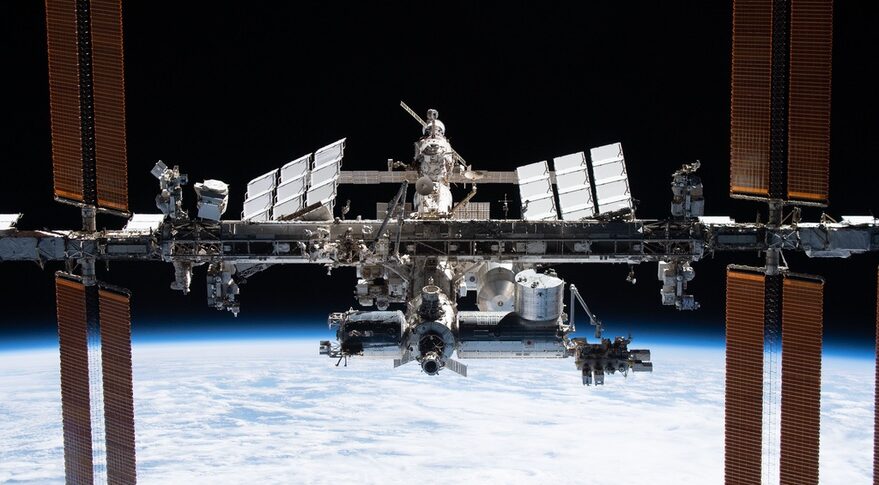by Jeff Foust —

WASHINGTON — NASA is requesting information from industry on its capabilities and interest in developing a spacecraft that would deorbit the International Space Station at the end of its life.
NASA issued the request for information (RFI) late Aug. 19, asking companies to supply information about how they could develop a spacecraft that would be used to perform the final reentry maneuvers at the end of the station’s life, pushing it into the atmosphere to break up over the South Pacific Ocean.
Under a nominal deorbiting scenario provided by NASA in the RFI, the spacecraft would attach to the forward port on the Node 2 module a year before reentry. During this time, the station’s altitude would gradually decay from atmospheric drag and maneuvers from thrusters on the station’s Russian segment, descending below 220 kilometers, the altitude below which only thrusters can provide attitude control for the station.
The deorbit vehicle would first place the ISS into an elliptical orbit of 145 by 200 kilometers to minimize the period in which the station has to rely on thrusters for attitude control. It would then make a final burn to lower the perigee to 50 kilometers, ensuring “atmospheric capture” or breakup of the station upon reentry.
NASA, in an ISS transition plan published in January, projected using Russian Progress cargo spacecraft for reentry. “NASA and its partners have evaluated varying quantities of Russian Progress spacecraft and determined that three can accomplish the de-orbit,” the report stated. It added that Northrop Grumman’s Cygnus spacecraft, which is capable of reboosting the station’s orbit, has also been considered for deorbiting the station.
“In a years-long effort, NASA and its partners have studied deorbit requirements and developed a strategy and action plan that evaluated the use of multiple Roscosmos Progress spacecraft to support deorbit operations,” NASA said in a statement announcing the RFI. “These studies indicated additional spacecraft may provide more robust capabilities for deorbit, and NASA has decided to assess U.S. industry’s ability to aid with safe deorbit of the complex.”
“NASA and our international partners are taking the prudent approach to the space station’s end of life planning to safely execute deorbit,” Kathy Lueders, NASA associate administrator for space operations, said in the statement. “As part of our 2030 transition planning, we are pursuing sufficient redundancy for the safety of the crew and people and structures on Earth. This also could be an important U.S. capability for future commercial destinations.”
NASA and the other ISS partners, except for Russia, have endorsed an extension of ISS operations from 2024 to 2030. Russian officials have said they plan to exit the ISS some time after 2024, but have not set a firm date. In the RFI, NASA said the nominal scenario calls for deorbiting the ISS in early 2031, but that it could be delayed or moved up depending on the status of ISS operations.
“Although nominal ISS [end of life] is late 2030, the Government requires that this deorbit capability be available as soon as possible to protect for contingencies that could drive early re-entry and beyond 2030 in the event of further ISS mission extensions,” the RFI stated. That includes the ability of launching the deorbit spacecraft as soon as six months before the final deorbit maneuvers.
In the RFI, NASA asks industry for their technical capabilities to develop a deorbit module that meets its requirements, as well as preferred contracting arrangements, operational issues and extensibility of such a module to serve commercial space stations. Responses are due to NASA Sept. 9.
Note: This article have been indexed to our site. We do not claim legitimacy, ownership or copyright of any of the content above. To see the article at original source Click Here












